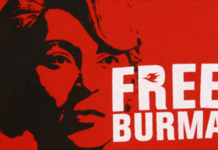by Dr. Kashif Hasan Khan * – Modern Diplomacy, OtherNews
Iran’s ability to remain resilient in the face of severe sanctions, foreign invasions, and military threats is rooted in a unique blend of geographic advantages, historical legacy, and strategic adaptability. For centuries, Iran has faced opposition from empires, global powers, and regional rivals, yet it remains a significant player in the Middle East. This article explores why Iran has consistently been able to maintain its sovereignty and strategic influence, defying many attempts at subjugation or defeat.
Geography: Iran’s Natural Fortress
Geography has always played a decisive role in the strength of a nation, and for Iran, this is especially true. The country is blessed with natural boundaries that serve as formidable defensive barriers. Iran’s geographic position, straddling several different regions-Central Asia, the Caucasus, the Middle East, and South Asia-has always made it a crossroads of civilizations and a buffer between major powers. But more than that, Iran’s natural topography is one of the main reasons it has proven so difficult to invade and conquer.
Iran is surrounded by the Caspian Sea to the north, the Persian Gulf and the Gulf of Oman to the south, and is bordered by deserts and mountainous regions to the east and west. These natural features have acted as Iran’s first line of defense for centuries. The Zagros Mountains, which run parallel to the western border, and the Elburz Mountains in the north, present formidable obstacles to any invading force. Historically, these mountains have acted as natural barriers against invading armies, making military campaigns in Iran highly costly and often futile.
A prime example of this was during the Iran-Iraq War of the 1980s. When Saddam Hussein’s forces launched an invasion in 1980, they were quickly bogged down by the difficult terrain, particularly the Zagros Mountains, which made it nearly impossible for Iraqi forces to make significant inroads into Iranian territory. Saddam’s plan to capture Ahvaz, a vital oil-producing region, and then move further into Iran by crossing the Zagros, failed miserably. The harsh landscape proved to be a significant impediment, resulting in a stalemate that lasted eight years, with no clear winner emerging.
Similarly, any attempt to invade Iran from the east would involve crossing vast, inhospitable deserts like the Dasht-e-Lut and Dasht-e-Kavir, which present logistical nightmares for any large-scale military campaign. Iran’s geography not only makes it challenging for external forces to invade but also enables it to use its strategic location to influence neighboring regions.
In addition to the mountainous terrain and deserts, Iran’s access to multiple bodies of water further strengthens its strategic position. The Persian Gulf, with its narrow chokepoint at the Strait of Hormuz, gives Iran control over one of the most critical maritime passages in the world. Nearly 20% of the global oil supply passes through this narrow strait, making it a key point of leverage for Iran in any geopolitical conflict. Control over the Strait of Hormuz allows Iran to disrupt global oil supplies, which serves as a potent deterrent against military action by its adversaries.
Historical Resilience: The Iranian Psyche
Iran’s geographical defenses are only part of the story. Its historical experience has imbued the Iranian people and state with a profound sense of resilience and perseverance. The country that we know as Iran today was once the heart of the Persian Empire, one of the most powerful and influential empires in ancient history. The legacy of this empire, which stretched from the Mediterranean to the Indus River at its height, is a source of national pride that fuels Iran’s modern identity.
Throughout its history, Iran has faced invasions from powerful empires, including the Mongols, Arabs, and Turks. Despite these invasions, Persian culture, language, and identity have endured, and Iran has consistently reemerged as a unified and sovereign state. Even when foreign powers have managed to conquer parts of Iran, they have struggled to hold onto it for long. This ability to survive and thrive in the face of adversity is central to the Iranian psyche.
The 20th century presented new challenges to Iran. The country was occupied by Britain and Russia during World War II, and in 1953, the United States and the United Kingdom orchestrated a coup that overthrew Iran’s democratically elected Prime Minister Mohammad Mossadegh after he nationalized the country’s oil industry. This intervention, which reinstated the Shah as the ruler, fostered deep resentment toward Western powers and laid the groundwork for the 1979 Islamic Revolution.
The Islamic Revolution marked a turning point in Iranian history. Led by Ayatollah Khomeini, the revolution overthrew the pro-Western Shah and established the Islamic Republic of Iran. This new government rejected Western influence, severing ties with the United States and Israel, and establishing a theocratic regime. The revolution was not only a rejection of foreign intervention but also an assertion of Iranian identity and independence.
One of the immediate consequences of the revolution was the Iran-Iraq War, which began in 1980 when Saddam Hussein invaded Iran, seeking to capitalize on the chaos of the revolution. Backed by the United States, Saudi Arabia, and other Gulf Arab states, Iraq launched a full-scale assault on Iran, hoping to capture key oil-rich territories. However, despite being isolated internationally and facing a better-equipped Iraqi military, Iran managed to defend itself effectively. The war lasted eight years and resulted in hundreds of thousands of deaths, but Iraq failed to achieve any of its strategic objectives, and Iran emerged from the conflict with its borders intact.
The Islamic Republic’s Strategic Depth
Following the Islamic Revolution and the war with Iraq, Iran began to carve out a new role for itself in the region. It pursued a policy of strategic depth by supporting Shia populations and militias in neighboring countries, aligning itself with groups that shared its anti-Western, anti-Israeli stance. This network of allies and proxies, known as the “Axis of Resistance,” has been crucial to Iran’s ability to project power and defend its interests in the Middle East.
The Axis of Resistance includes groups like Hezbollah in Lebanon, the Assad regime in Syria, Shia militias in Iraq, and the Houthis in Yemen. By supporting these groups, Iran has been able to extend its influence beyond its borders and challenge the interests of its regional rivals, particularly Saudi Arabia and Israel. This strategy allows Iran to wage proxy wars and exert influence without direct military confrontation, making it more difficult for its adversaries to counter its influence.
In Lebanon, Hezbollah, which receives financial and military support from Iran, has become one of the most powerful political and military forces in the country. It has repeatedly clashed with Israel, most notably during the 2006 Lebanon War, where it inflicted significant damage on Israeli forces, further demonstrating Iran’s capacity to challenge its adversaries indirectly.
Iran’s support for groups like Hezbollah, Hamas, and the Houthis serves several strategic purposes. First, it provides Iran with leverage in conflicts involving Israel and Saudi Arabia. Second, it helps Iran secure its borders by fostering alliances with groups that can act as buffers against foreign intervention. Finally, it bolsters Iran’s image as a defender of Shia Islam, further solidifying its leadership among Shia communities in the Middle East.
Sanctions and Economic Adaptability
Another significant factor that contributes to Iran’s resilience is its ability to withstand economic pressure. Since the 1979 revolution, Iran has faced a series of increasingly severe sanctions, primarily imposed by the United States and its allies. These sanctions have targeted Iran’s oil exports, financial institutions, and industries, crippling key sectors of the economy. Yet, despite these challenges, Iran has managed to adapt and survive.
Iran has responded to sanctions by developing its domestic industries and forging new trade relationships with countries like China, Russia, and India. It has also relied on its vast natural resources, particularly its oil and gas reserves, to generate revenue and maintain its economy. While sanctions have undoubtedly caused economic hardship, they have also forced Iran to become more self-sufficient and resilient.
Iran’s ability to circumvent sanctions through creative means, such as smuggling and using black-market channels, has helped it maintain a flow of income. Additionally, its alliances with other countries facing Western pressure, such as Venezuela, have allowed it to develop alternative trade networks.
Military Capabilities
Iran’s military capabilities have also played a critical role in its resilience. While Iran’s conventional military may not be as advanced as that of the United States or Israel, it has invested heavily in asymmetric warfare capabilities, including ballistic missiles, drones, and cyber warfare.
The Islamic Revolutionary Guard Corps (IRGC), an elite military and political force, oversees Iran’s missile program and supports its network of allies across the region. Iran’s missile capabilities are particularly concerning for its adversaries, as it has developed a range of missiles, including the Sejjil and Emad, that can reach targets as far as 2,000 kilometers away, putting Israel, Turkey, and parts of Europe within striking distance.
In addition to its missile program, Iran has also developed a sophisticated drone program, which it has used to great effect in conflicts across the region. Iranian-made drones have been used by Hezbollah in Lebanon, the Houthis in Yemen, and Iraqi Shia militias, further enhancing Iran’s ability to project power and challenge its adversaries.
Conclusion: Iran’s Enduring Strength
Iran’s resilience is the result of a combination of factors: its strategic geography, historical experience, military capabilities, and alliances across the region. Despite facing significant challenges, including sanctions, military threats, and regional rivalries, Iran has managed to maintain its sovereignty and influence. Its ability to adapt, leverage its geographic advantages, and build a network of allies has made it one of the most formidable powers in the Middle East. While Iran’s future remains uncertain, its past suggests that it will continue to defy attempts at subjugation and remain a key player on the global stage.
On the cover photo, famous view of Tehran, Iran: Flow of traffic around Tohid Tunnel with Milad Tower and Alborz Mountains in Background©leshiy985/Shutterstock.com
* Prof. Kashif Hasan Khan is a faculty member in the Economics Department at Ala-Too International University in Bishkek, Kyrgyzstan. Kashif formerly held positions as an assistant professor in Konya, Turkey, an international business consultant in Manila, the Philippines, and a consultant economist with the Asian Development Bank. He has multiple books with highly reputed publishers and research papers in scholarly journals that are indexed in the Web of Science, Scopus, ABDC, and other databases. He is focused on researching economic corridors, India-Central Asia connections, and international trade. He can be contacted at rfellow8@gmail.com
























